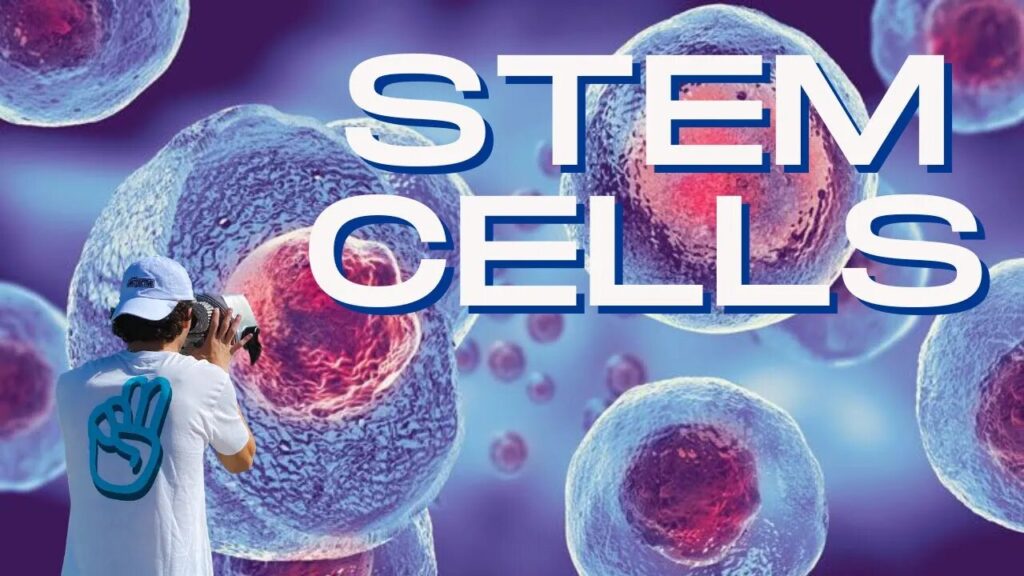Stem cells have been fuelling enormous progress in regenerative medicine and have changed our understanding of human biology. These remarkable cells have the one-of-a-kind ability to develop into the different cell types that make up the body: During early life and growth, they are found in embryos and differentiate into all of the cell types of the body. They also serve as an internal repair system in many tissues, often dividing without limit to replace other cells. Stem cells are one of the most crucial factors in medical research that can offer a range of possible treatments for many diverse diseases. Surely, it is the nature and the role of stem cells that describe their huge potentiality in science and medicine.
Types of Stem Cells
Basically, there exist two broad categories of stem cells: embryonic stem cells and adult stem cells. Each of these types has different properties and possible applications.
Embryonic Stem Cells (ESCs): These are derived from embryos, particularly from a blastocyst, which is a structure formed in the first few days of fertilized egg development. They are pluripotent, meaning they can differentiate into nearly all cell types in the body. This makes them extremely useful for research purposes and with possible therapeutic applications. However, ESCs are more often than not bordered by ethical concerns and regulatory restrictions on their use.
Adult Stem Cells: Also known as somatic or tissue-specific stem cells, they can be found in various tissues of an adult organism, such as the bone marrow, brain, blood, and liver. Adult stem cells are unlike ESCs in that they are multipotent. In other words, they are capable of generating only a few cell types, which are all associated with their original tissue. For instance, hematopoietic stem cells in the bone marrow differentiate into various types of blood cells but not into nerve cells. Even though they already become partially differentiated, adult stem cells play a crucial role in maintaining and repairing the tissue wherein they reside.
Induced Pluripotent Stem Cells (iPSCs)
One revolutionary breakthrough in the field of stem cell research is the induction of pluripotent stem cells. These are adult cells that are, through genetic means, induced into a state in many ways reminiscent of embryonic stem cells. iPSCs display the same pluripotent characteristics as ESCs in that they can give rise to any cell type. On the other hand, it can generate patient-specific cells, avoiding some of the problems of tissue rejection associated with transplants, and bypassing some of the ethical issues associated with ESCs.
Importance of Stem Cells in Medicine
Stem cells hold so much promise in medicine for the future. Their unique properties help them serve a number of valuable reasons, including the following:
- Regenerative Medicine and Tissue Engineering:
It is expected that stem cells will regenerate damaged tissues and organs of the body, thereby giving treatments for diseases that are incurable at present. For example, they would replace heart tissue damaged at the time of a heart attack, regenerate neurons in neurodegenerative diseases like Parkinson’s, or manufacture insulin-producing cells for diabetes patients.
2. Personalized Medicine:
iPSCs can be generated in a patient-specific manner. Cells for study of the mechanism of the diseases and testing of drug responses within a laboratory setup would lead to more personalized and effective treatments.
3. Drug Development and Screening:
In vitro modeling of diseases using stem cells offers a chance for the testing of new drugs and actions on human cells. Such an approach may greatly speed up drug development processes and reduce reliance on animal testing.
4. Understanding Development and Disease:
Long-term research into stem cells allows scientists to understand the very basics of human development and how cells differentiate to make tissues. Such knowledge lays the foundation for understanding the mechanisms behind a lot of diseases, including cancer.
Current Applications and Research
Research into stem cells has already brought considerable advancement and applications in medicine. A few examples include the following:
- Bone Marrow Transplants:
One of the oldest uses of stem cells is in the case of bone marrow transplantation. Hematopoietic Stem Cells extracted from the bone marrow are used in the treatment of patients with leukemia, lymphoma, and other disorders related to blood.
2. Treatment of Blood Disorders:
One avenue of research in gene editing has been into stem cells for the treatment of genetic blood disorders like sickle cell anemia and beta-thalassemia. Such blood disorders can be cured by replacing faulty genes in the patient’s stem cells.
3. Eye Diseases:
Clinical trials are underway to treat AMD and other retinal diseases with stem cell-derived retinal cells. Preliminary results are promising for restoring vision or arresting the progress of disease.
4. Spinal Injuries:
Scientists study application of stem cells in repair of spinal cord injuries. Experimental treatments replace damaged nerve cells, foster growth of new nerves, and restore lost functions.
5. Diabetes:
Researchers are working on developing cells that will be able to produce insulin from stem cells as a cure for the symptoms of type 1 diabetes. In fact, this therapy will help rid the patient of dependence on insulin shots since it allows his body to secrete insulin naturally again.
Challenges and Ethical Considerations
Though the power of stem cells is great, several challenges and ethical considerations come with their use. These are as follows:
- Ethical Concerns:
The use of embryonic stem cells requires the destruction of embryos; therefore, such application raises ethical issues with respect to when human life begins and the moral status of embryos. This is differently regulated in different countries because of varying cultural and ethical perceptions.
2. Technical Challenges:
The main issue related to the application of these cells, however, is in controlling their differentiation process so that they go on to develop into the required kind of cell without forming tumors or any other such harmful effects. Safe and effective protocols for therapy from stem cells are yet in the stage of development.
3. Immune Rejection:
If stem cell treatments are to become successful, then immune rejection issues will have to be ironed out. Even with the use of iPSCs, which are patient-specific, there is a possibility of an immune response when the cells don’t have an absolutely perfect match.
4. Cost and Accessibility:
Certainly, stem cell treatments are very expensive and quite complex to administer, therefore accessibility and equitability in healthcare have already been brought into question. Already, one of the significant challenges is ensuring access of these treatments to all people in need, regardless of their socio-economic status.
Also read: 10 ways to develop a strong sales strategy?
Future Directions
The future for stem cell research looks great. At least, that’s where the development of gene editing technologies like CRISPR, advances in techniques for culturing stem cells, and better understanding of cellular reprogramming may turn in with new and innovative treatments. The continued development of organoids—essentially, miniature, simplified versions of organs cultivated in vitro—may revolutionize the testing of drugs and modeling of diseases.
In other words, stem cells are definitely one of the miracle tools in modern medicine that could redesign the lines of treatment for many diseases. Only their ability to regenerate and repair tissues in the human body makes them colossally valuable for regenerative medicine, personalized treatments, and furthering knowledge regarding human biology. There are challenges involved, but research and ethical considerations are already on their way to bring out their full potential, which has resulted in some breakthroughs in medicine.
Other Sources: SciTech







One thought on “The Astonishing Power of Stem Cells: What They Are and Why They Matter”